Evolving from Decentralization to Centralization – Back to a Decentralized Future
Evolving from Decentralization to Centralization – Back to a Decentralized Future
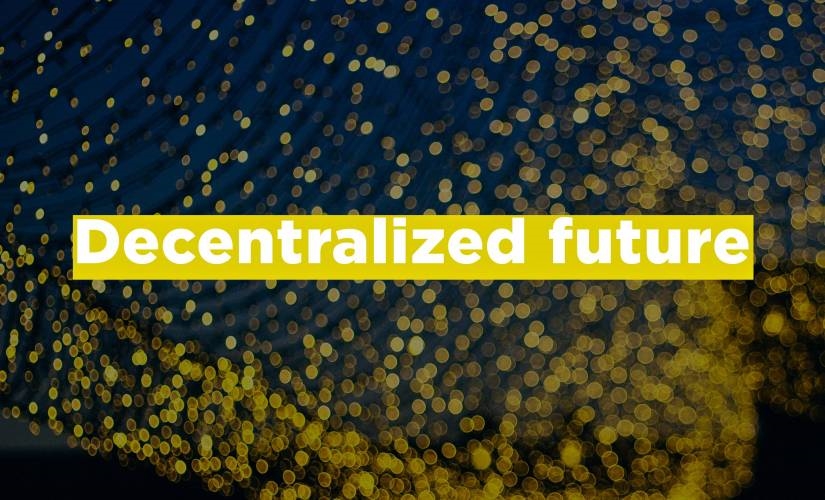
Believe it or not, decentralization is nothing new. It first began with the social organization of ancient human societies. They lived together in small Neolithic decentralized communities of less than 100 people where everyone was accountable for one another.
Small populations directly made management easier. Such small communities could easily trust one another, and the close relationships maintained by individuals made it hard for any of the group to get away with bad or selfish behavior.
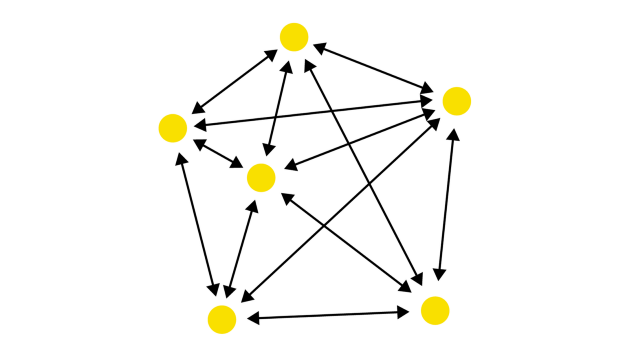
(Image courtesy of Johann Gevers)
As a result, the social structure that existed before the agrarian revolution consisted of a decentralized society where interactions were between individuals living in a community with a limited hierarchical structure.
There was no need for rulers to govern and control interactions since everyone was self-reliant.
However, as communities began to focus more on agriculture as a means of food production, suddenly there was more food and communities grew from small groupings of 100 people to larger societies of several hundred people.
Neolithic Age: the birth of the Agrarian Revolution
History is not precisely clear on what triggered the agrarian revolution. However, as communities became more sophisticated, the Neolithic Age became marked by a period of transition from small nomadic groups of hunters and gatherers to larger settlements of early agricultural civilizations.
History also reveals that this period started in the fertile crescent of the Middle East. This is where humans first came up with farming tools around 10,000 BC, shortly after the Stone Age. Some scholars call this period the New Stone Age.
This is because during this period, even though humans had just started practicing agriculture, they still depended on stone tools and hoes to eke out an existence.
Even in the early stages of the agrarian revolutions, communities were only able to sustain a small population that practiced hunting and gathering as a subsidy to their farming practices.
V. Gordon Childe (an Australian archeologist who coined the term Neolithic Revolution) mentions that this period coincided with the separation of the Neolithic people from their Paleolithic ancestors who were known for their rudimentary chipped stone tools. Just as new technologies such as the internet (in present times) created a shift from old social norms to new ones, so did agriculture.
But how did these small communities transform into hierarchical complex societies dependant on centralized forms of government?
Formation of cities and towns.
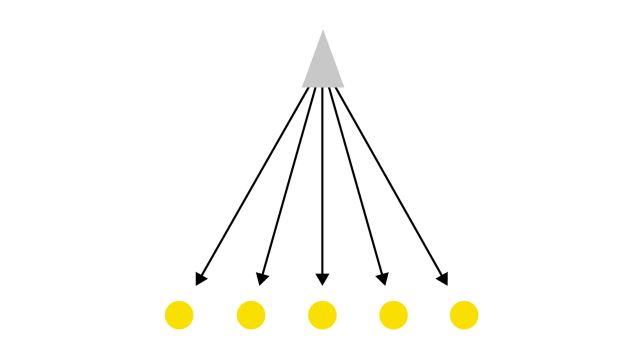
The idea of a ruler dictating the day to day lives of their subjects came about as a result of seeking solutions to developing problems. The agrarian revolution resulted in increased food production and as communities grew larger, it simply became impractical to maintain order without a central authority to oversee social interactions.
According to conventional views, it was after the Neolithic period that cities began to form. Even with the lack of evidence on the conditions that gave rise to towns and cities, theorists speculate that the growing human population and the benefits that come with dense settlements must have contributed to the formation of early cities and towns.
According to Childe, it was during this time that humans started living together in organized communities. Most researchers agree that no single factor triggered the Neolithic Revolution; however, scientists theorize that perhaps the end of the Ice age 14,000 years ago must have led to climate change with the earth getting warmer hence triggering the agrarian revolution. The aftermath was increasing advancement towards agriculture, marked by a growing network of interactions among human beings that necessitated centralized social structures.
It is believed that farming immigrants replaced foragers and increased food production, resulting in higher population density per unit of land, hence increased development of towns and cities. Adding to this idea is Paul Bairoch’s book titled Cities and Economic Development. He argues that agriculture appears to be a necessary precursor to the formation of towns and cities.
After all, at the time, living in dense populations as opposed to sparsely populated communities had clear advantages including:
- Reduced costs of transportation
- Interaction and exchange of ideas
- Large local markets
- Easy sharing of natural resources
- Easy access to amenities such as security, access to running water and sewage disposal
How did empires emerge?
Well, as communities evolved to have increasing dependence on agriculture, people started learning how to produce a variety of products. For instance, they learned how to improve labor intensity through the use of animals. Cultivation increased, and they began to produce wool, milk and other products. This increase in food and resources further increased the population from about 6 million in 8,000 BC to approximately 50 million in 3,000 BC.
Larger communities resulted in the increased complexity of disputes that had to be solved. And, with more interactions, some individuals found better and faster ways to trade and acquire wealth.
Therefore, as a need for better organizational structures arose, chiefs and village elders took up the responsibility of facilitating trust and accountability in the growing communities.
Eventually, social structures wholly changed and as the complexity of trade increased, a small group of the population became increasingly wealthy and powerful. The idea of money gained traction as people devised new ways to exchange farm products.
The evolution of a monetary system.
One of the most essential modern inventions that came about as a result of the agrarian revolution is the idea of money. At the time, history reveals that the barter trade was the most common mode of commerce. Eventually, however, the drawbacks of bartering as a medium of exchange increased and traders started using commodity money such as cows, salt, wine, and precious stones.
But even commodity money proved to be an unsustainable idea. There was also a period where metallic money became popular among early traders as a form of currency, but due to issues of trust, weight, and purity, a new concept of money was needed.
For this reason, kingdoms emerged as a way of giving legitimacy to paper money in the form of IOU contracts to the monarch.
The rise of government.
It is not clear how monarchs came to be, but it can be assumed that early communities needed better management of projects like irrigation and building of surplus food storage facilities. Robin Dunbar, an award-winning anthropologist, an evolutionary psychologist believes that beyond the amenities that are accessible in cities and towns, one of the most significant contributing factors to the move from decentralized societies to centralized ones was the need for armed protection against neighboring groups.
Dunbar’s Number
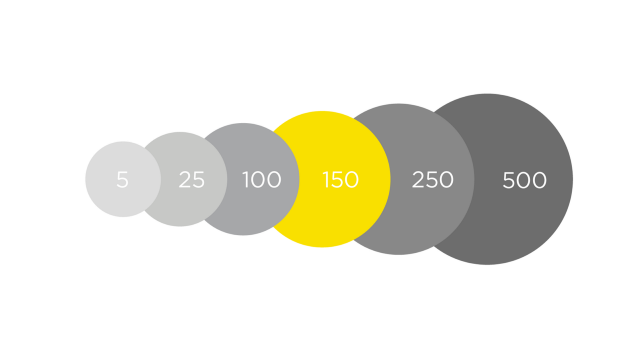
In his theory, Dunbar’s number limits the number of individuals in a community with whom we can maintain stable relationships. The theory of Dunbar’s number holds that 150 is the maximum number for any group of humans to maintain harmony as a community. Beyond that threshold, people will have difficulty keeping track of each other, leading to a collapse of society. Dunbar’s number explains why it became increasingly difficult for community members to trust one another and have healthy social interactions.
According to Dunbar’s theory, the reason why 150 is the limit to healthy communal relationships among humans is that it takes effort for the individual to build networks beyond this number. An individual has to commit to giving more time to nurture personal relationships through gifts and favors that improve interdependence among members of a community.
These relationships were vitally important as they enabled individuals to pay back in kind during trade and other social interactions. Therefore, establishing a sense of trust and security, according to Dunbar’s theory, was achievable with a small community. However, above the 150 marks, communities required a centralized authority to keep track of who was trustworthy and who was not. To resolve this, the monarch provided a reliable borrower of money that was used to pay the army for the protection of the subjects. It also offered a judicial system for the benefit of the subjects.
Back to governance.
Therefore, out of the need for armed protection, empires emerged. The power that was previously controlled by wealthy individuals became institutionalized into political and religious groups. The political groups provided security as well as a reliable trust system for trade and the flow of information.
As you can see, throughout history, agrarian societies were marked with extremes of rigid social mobility and social classes. Even though the specific point in time where the development of human government started is not clear, studies show that the development of irrigation technologies for agricultural projects was a catalyst in the developing need for governance.
David Christian puts it vividly in his book ‘Maps of Time’ where he says “Farming populations gathered in larger and denser communities, interactions between different groups increased and the social pressure rose until, in a striking parallel with star formation, new structures suddenly appeared, together with a new level of complexity. Like stars, cities, and states reorganized and energized the smaller objects within their gravitational field.”
Ultimately, the land became the primary source of wealth; the development of social hierarchy based on land ownership was inevitable. This gave rise to the governing class and the masses. In some areas, tribal chiefs were elected by various rituals that tested an individual’s leadership and military strength while in other cases a group of elders acted as the ruling class of the community. Eventually, the landowning strata became a combination of religion, the government, and the military. These three social elements justified enforcement of ownership, leading to a rigid stratification of the societies as seen in the Caste system of India and other examples.
The pros and cons of centralization.
There is a clear-cut difference between centralization and decentralization. Already, we have seen the importance of a centralized system in its role to create order, reliability, and trust.
But, as society became more complex, the structure of centralized societies evolved as well. Centralized governing structures developed better levels of consistency that were more cost-efficient and fair to all. Waste was eliminated, and the ruling class was able to focus on long-term planning and decision-making to the benefit of the whole community. Furthermore, a mix between decentralization and centralization was established to enable flexibility and peak performance of development projects.
Other advantages of centralization that stood out included:
- With a centralized authority in place, cost of production eventually reduced due to standardized procedures of trade and production
- Uniformity in action was also achieved thanks to the control of central administration
- Improved quality of work was also attained
- Finally, with direct supervision and control, centralization enabled better coordination in society.
Overall, the main advantage of adopting a centralized system was and still is efficiency. Decisions are made quickly in a centralized system, and there is little to zero duplication of roles. Plus, as a result of centralized authorities, societies can become reasonably stable, consistent and predictable, especially when it comes to projects that involve the collective. Besides, it’s also easy to establish control and accountability in case things don’t work out as expected.
But of course, such advantages don’t come without drawbacks. While there are definite positives, that have added to the rise and success of centralized systems, most of them also have many pitfalls that sometimes outweigh the good to a significant extent.
Some of the shortcomings of centralization include the following issues.
Abuse of power
One of the biggest downside to centralization is its assumption that the top leadership always has the interests of the subjects at heart.
All through history, it has been shown that a centralized system of authority attracts the worst of characters or rather turns good characters to bad.
One notorious example is how Hitler managed to assert his autocracy that led to a massive genocide of the Jewish community. Even though Germany at the time had a democracy, the state was characterized by a weak democracy that quickly gave way to Hitler’s autocracy.
Other examples of autocracy as a result of centralized political structures include the Roman emperors who declared themselves gods, not to mention Napoleon Bonaparte who took power, declaring himself emperor.
The reality is that throughout the history of civilization, centralized forms of governance always end up with autocratic styles of leadership and as John Emerich Edward Dalberg Acton (1834–1902) would put it, “Power corrupts and absolute power corrupts absolutely.”
Slow down inefficiency
As centralized systems develop further, they experience a reduction in the level of efficiency. For starters, since most of the decisions are made at the top to affect the subjects at the bottom of the pyramid, there is bound to be a disconnect that results in resentment by the subordinates. Plus, since the top leadership is tasked with making the decisions, the entire approach can be overwhelming, and thus the quality and speed of arbitration eventually goes down.
Censorship
Apart from the abuse of power, and the eventual reduction in efficiency, another disadvantage of centralization is censorship. In the political sphere, China has had the most centralized form of government in the world. Centralization of authority was first introduced in China during the Qin Dynasty. The dynasty entailed a consistent effort to concentrate authority to the Qin government.
The first Emperor, Qin Shi Huang, managed to control his territories by setting up new laws and regulations. However, even though the military and government of ancient China thrived, the situation escalated into a high level of censorship. Currently, as a result of a long history of extremely centralized forms of government, China has no freedom of the press and information is continuously filtered by the government to control people’s perceptions and ideas.
Economist.Com reports that China’s internet is the world’s most centralized and most censored. Furthermore, the report shows that over 2 million content controllers are working in China’s internet industry today. Plus, some Beijing based tech companies are working to enroll in blockchain technology to come up with a technological world domination system.
Just in the same way the internet has been used as a tool to exert centralized censorship, so has education. While education is supposed to teach children critical thinking and evaluation of information in the form of intellectual debates and arguments, countries like Iran are banning the teaching of English in order to limit “Western Cultural Invasion.”
As is evident with the above examples, any form of centralization will lead to a concentration of all the power at the central top point in the pyramid. Just like a pyramid, the larger the base (i.e. the larger the number of commoners Cat the bottom), the larger the power concentrated at the tip of the pyramid, hence the greater the risk of anarchy. You can almost always guarantee that when there are no systems of checks and balance on the ruling elite, the ruling elite will become bad actors in the system and censorship will prevail.
Why decentralization is important.
The above examples, among other bodies of evidence, highlight the problems caused by highly centralized systems. If left unchecked, centralized systems will lead to unbalanced exertion of control by the select few elites. For this reason, decentralization, a process that distributes and delegates decision-making and planning away from central authority, is essential.
Throughout history, and even in the contemporary world, the concept of decentralization has been applied in order to improve the shortcomings of centralization. Right from the start, western civilization has been marked by instances where mankind has attempted to break down the pillars of centralization. Some of the primary examples include the following cases.
The birth of democracy.
Democracy is mostly viewed as the bedrock upon which decentralization thrives. In fact, the entirety of western civilization is founded on first attempts made in Athens to bring power to the people. Granted, the Athens approach was still centralized in that only a select group of individuals could vote in a leader.
However, it was a significant advancement towards decentralization compared to a system that placed the fate of an entire civilization on one individual. The concept of democracy has been impaired by issues of corruption and lack of efficiency.
However, since its invention in 508 BC in Athens, it remains one of the noblest endeavors in human civilization. This system of governance has resulted in great artistic and scientific innovations as well.
Printing press.
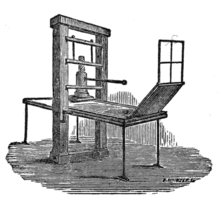
Early Press, etching from Early Typography by William Skeen
Compared to medieval Europe, the world today is far more knowledgeable with a wealth of information at arm’s reach. This was not always the case. Before the invention of the printing press, the flow of information was controlled by a highly centralized system led by religious leaders and the government.
For instance, religious texts such as the Bible could only be read by religious leaders who the people trusted for the right interpretation. Thanks to the printing press, information that was previously under the control of the elite, including the Bible, was finally easily accessible. Using technologies such as the pigeon post, ideas were shared around the world and the centralized control over the flow of information collapsed.
Even though the owners of the few available printing presses at the time could still exert control over information at the time, the rise of libraries enabled decentralization of knowledge and power.
Internet.
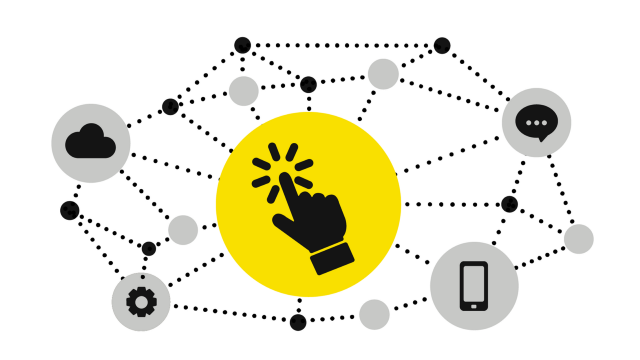
The printing press brought about the beginning of print as consumable media; however, it eventually assumed a centralized approach where owners of the newspapers and publishing houses controlled the flow of information. The gatekeepers maintained their position for quite some time until the advent of the internet.
Today, the internet has made it possible for everyone to act as their own publisher and there is little censorship in the sharing of ideas. Apart from consumable media, the internet has decentralized a lot of industries including finance with the invention of digital money.
We have decentralized distributed ledger technology.
Distributed ledger technologies are not new. They have formed the backbone of cloud computing, and they provide a reliable solution for accounting and record keeping. A DLT is a protocol of interconnected machines in a network that has no central server disseminating information; rather, the connected devices agree with each other to reach a consensus for the sharing and storage of data.
Thanks to the consensus protocol that all the machines agree upon, once the information is stored on the ledger, it would require the consensus of all the machines for that information to be changed. This provides immutability, security, and transparency in a trustless system.
DLTs such as blockchain have made it possible for cryptocurrencies to function and thrive. Now, the concept of money is also getting decentralized through cryptocurrencies like Bitcoin. This is possible since digital money can now have an immutable digital identity and thus solve the problem of double spending.
Even though cryptocurrencies have a long way to go before they become universal legal tender, it goes without saying that this new technology holds a lot of potential for further decentralizing in the future.
Final thoughts: the future is decentralized.
As you can see, decentralization is essential for the advancement of civilization. Furthermore, decentralization through technologies like blockchain can bring about transparency and accountability in governance, finance, and communication.
Sectors such as supply chain management, property rights, contractual agreements, and digital identity can benefit tremendously from decentralized technologies. Overall, it has become quite evident that blockchains have a role to play in good governance, global sustainability, and equitable economic development.
The United Nations is already looking to leverage alternative financial mechanisms with the help of blockchain technology to support entrepreneurship and advance its sustainable development goals (SDGs).
Programs by global organizations such as the SDGs can set the pace for broader levels of transparency, collaboration, and exchange across the globe (demyan, author, personal business).
The post Evolving from Decentralization to Centralization – Back to a Decentralized Future appeared first on ReadWrite.
(35)

